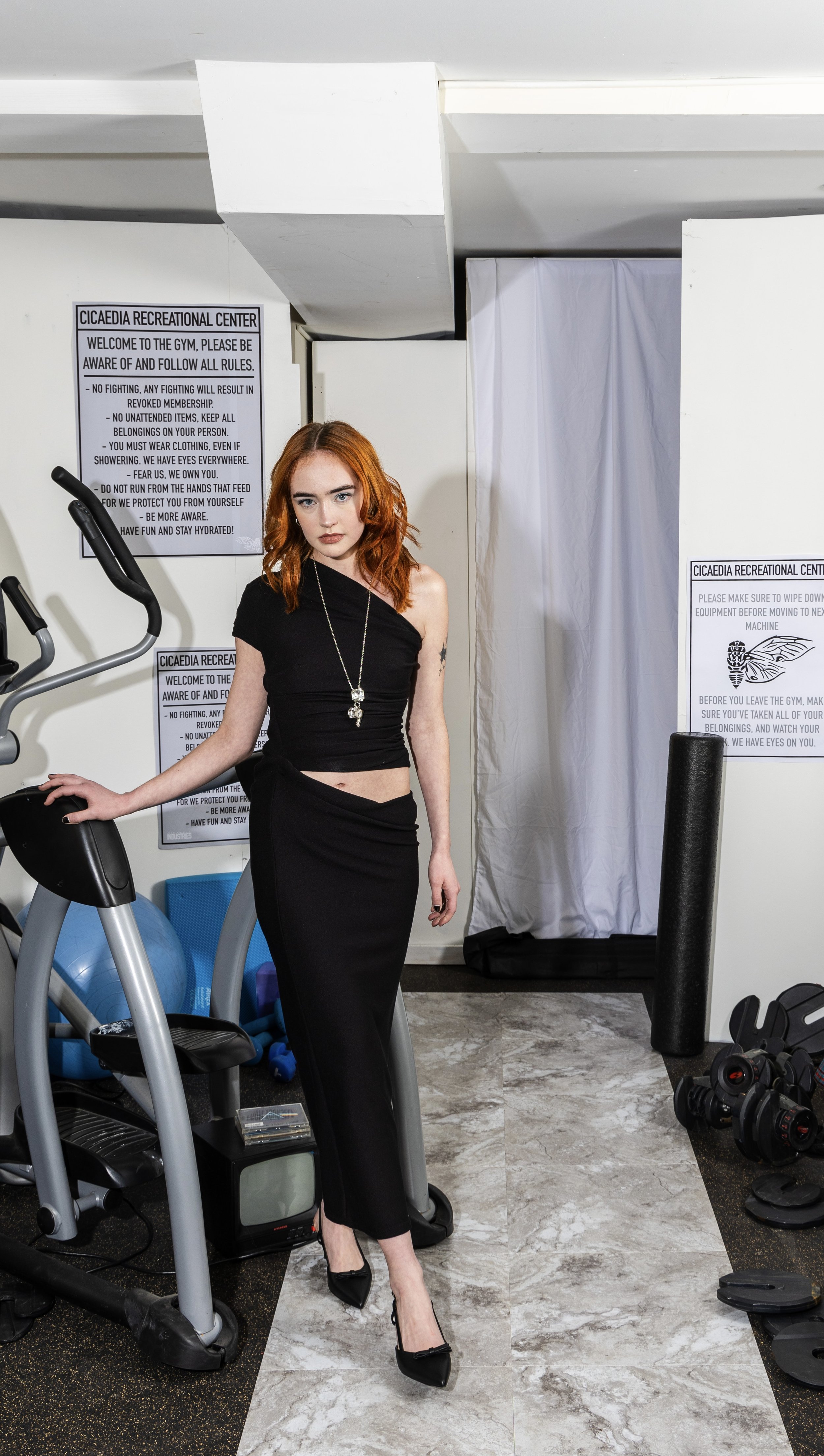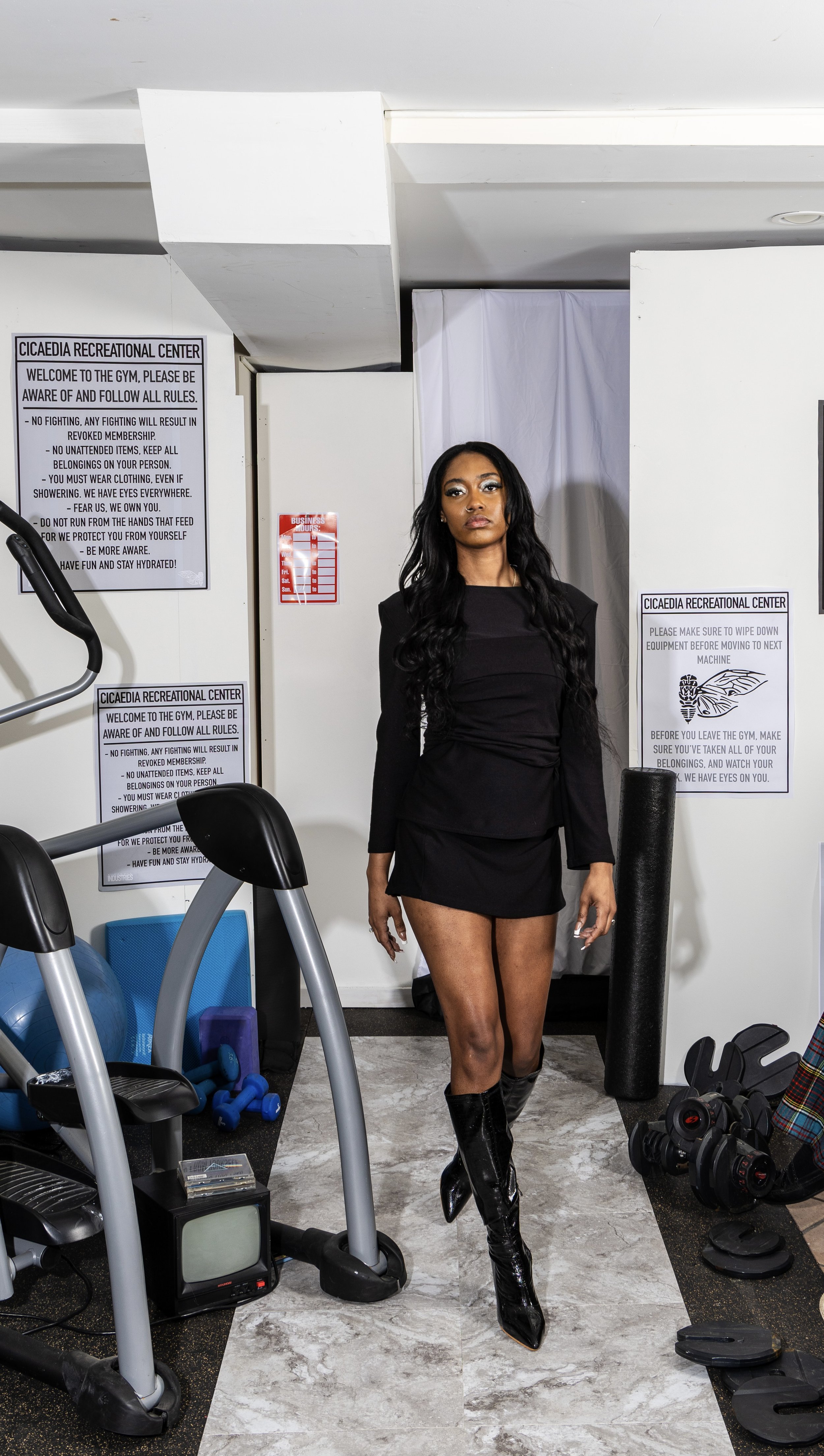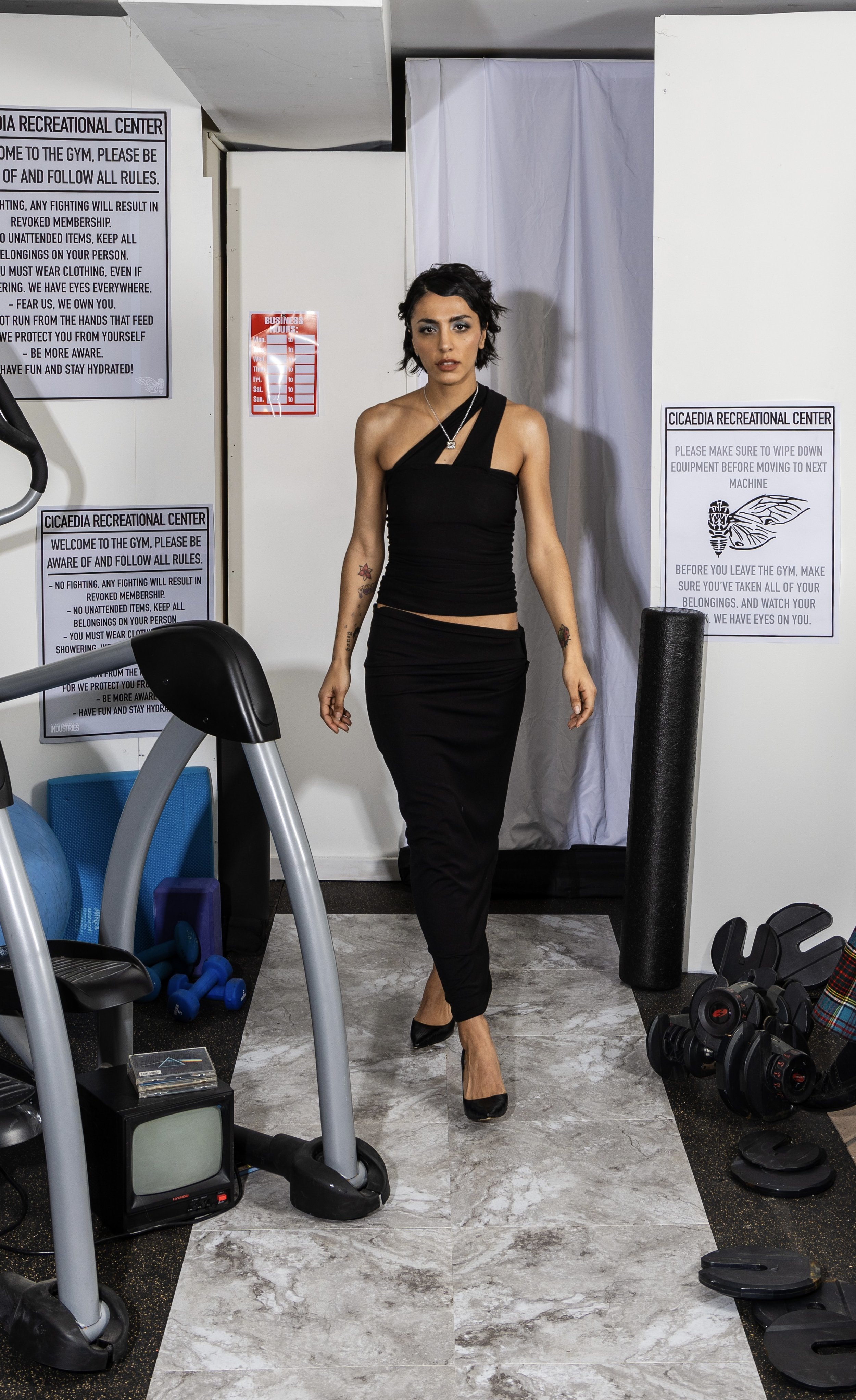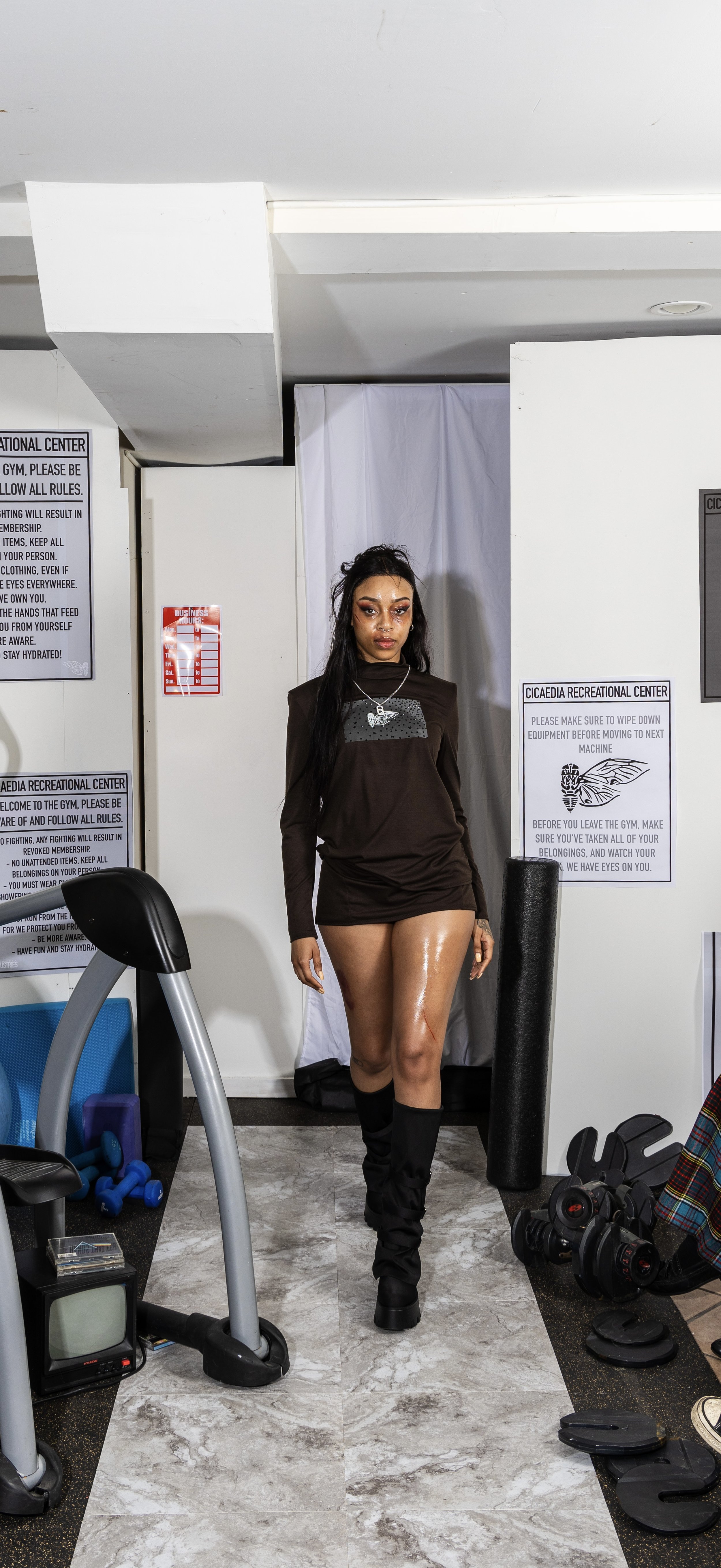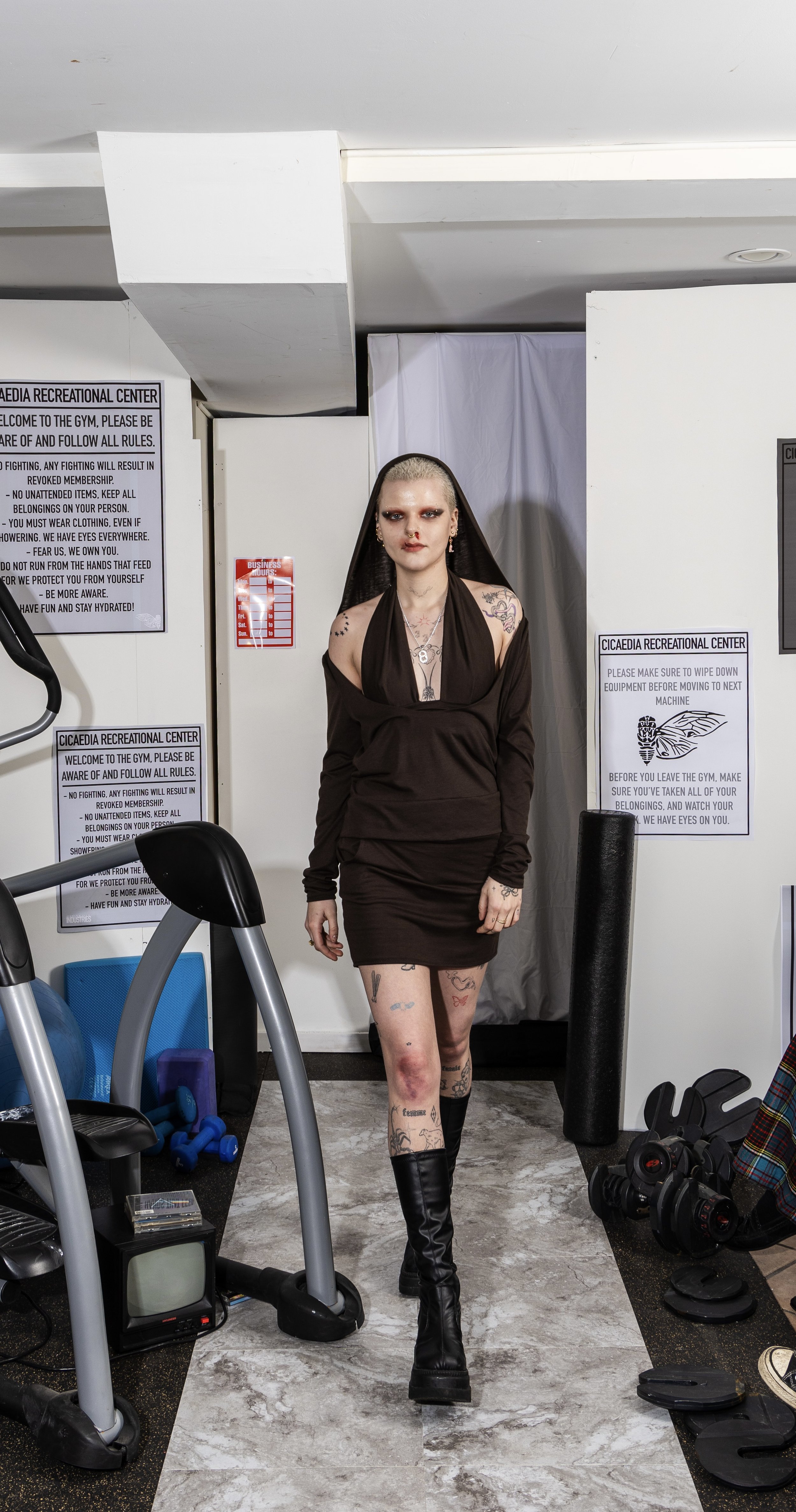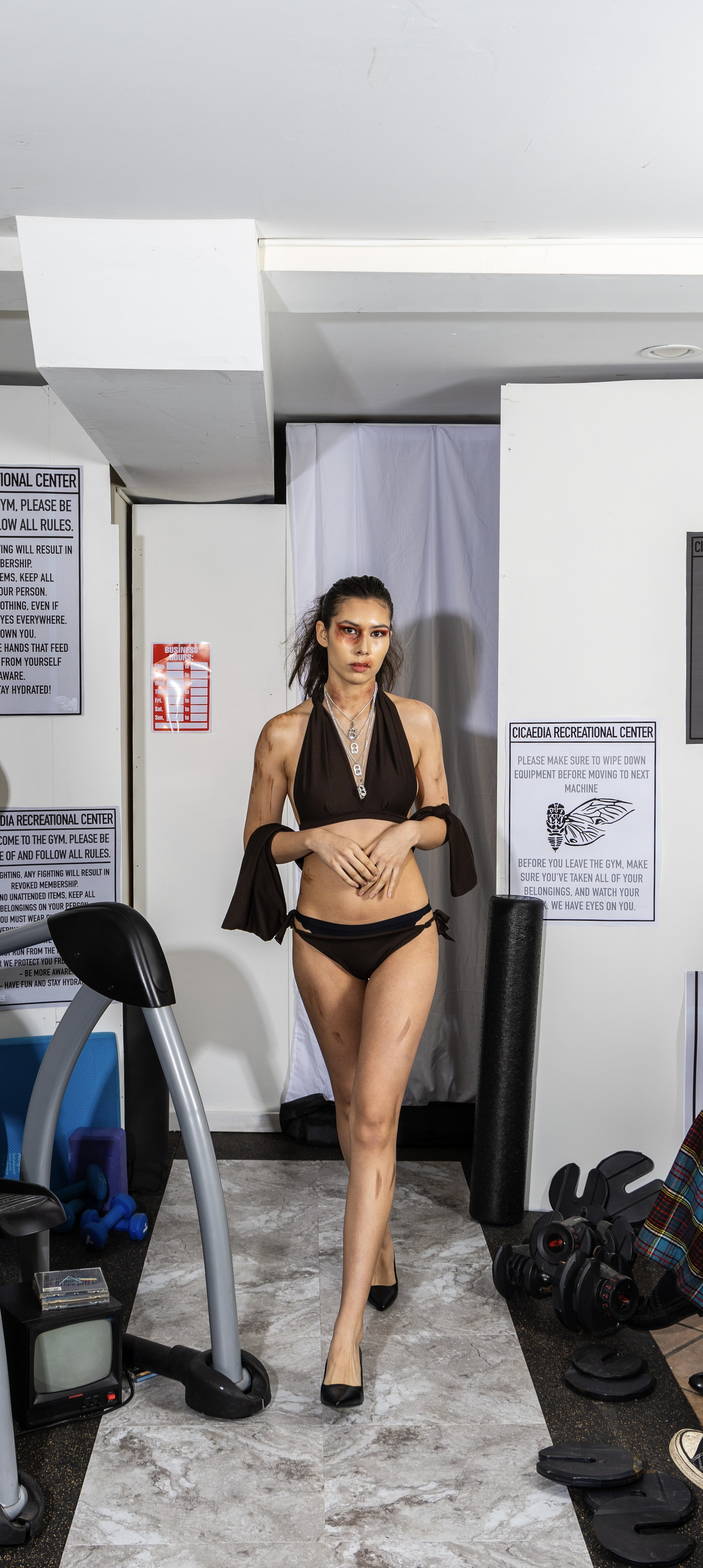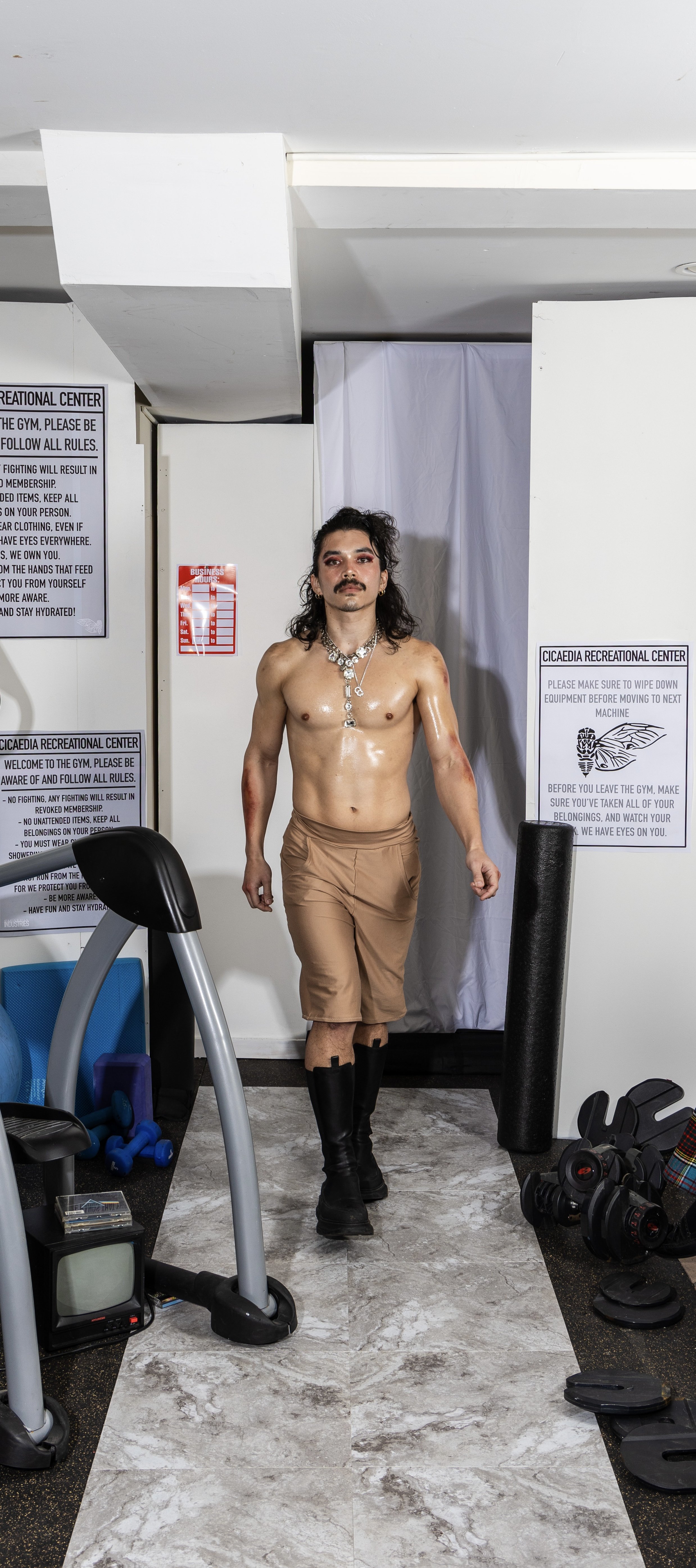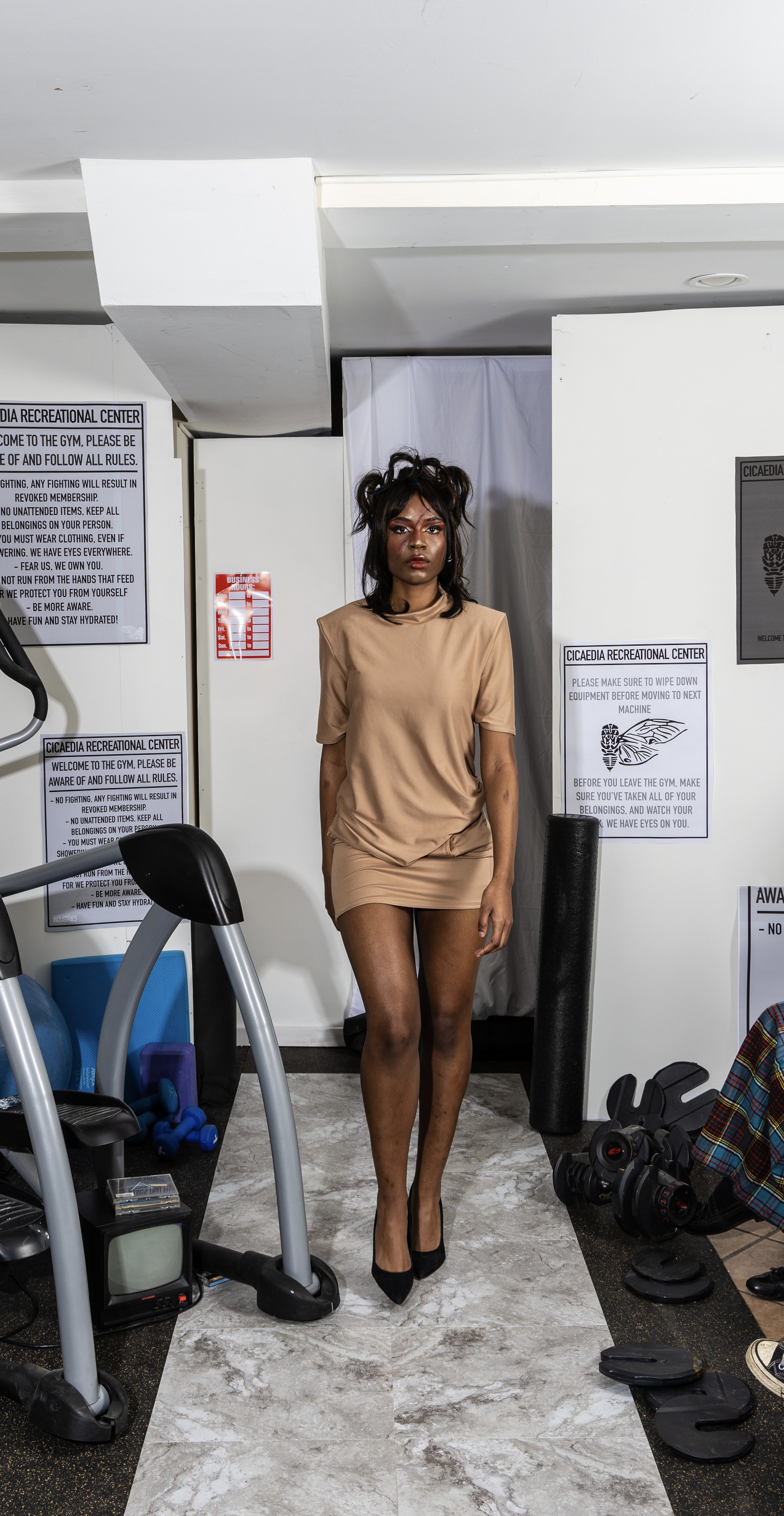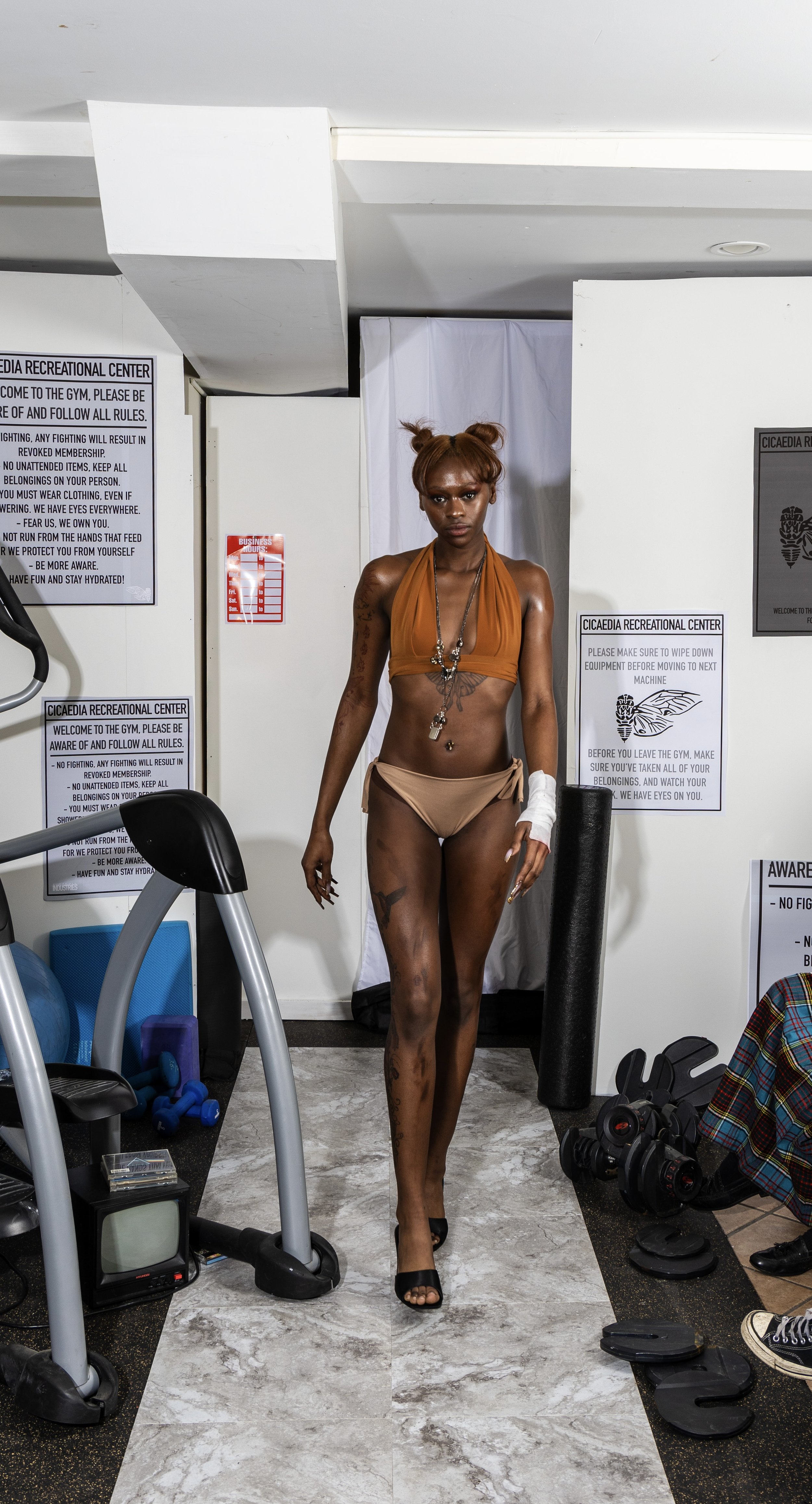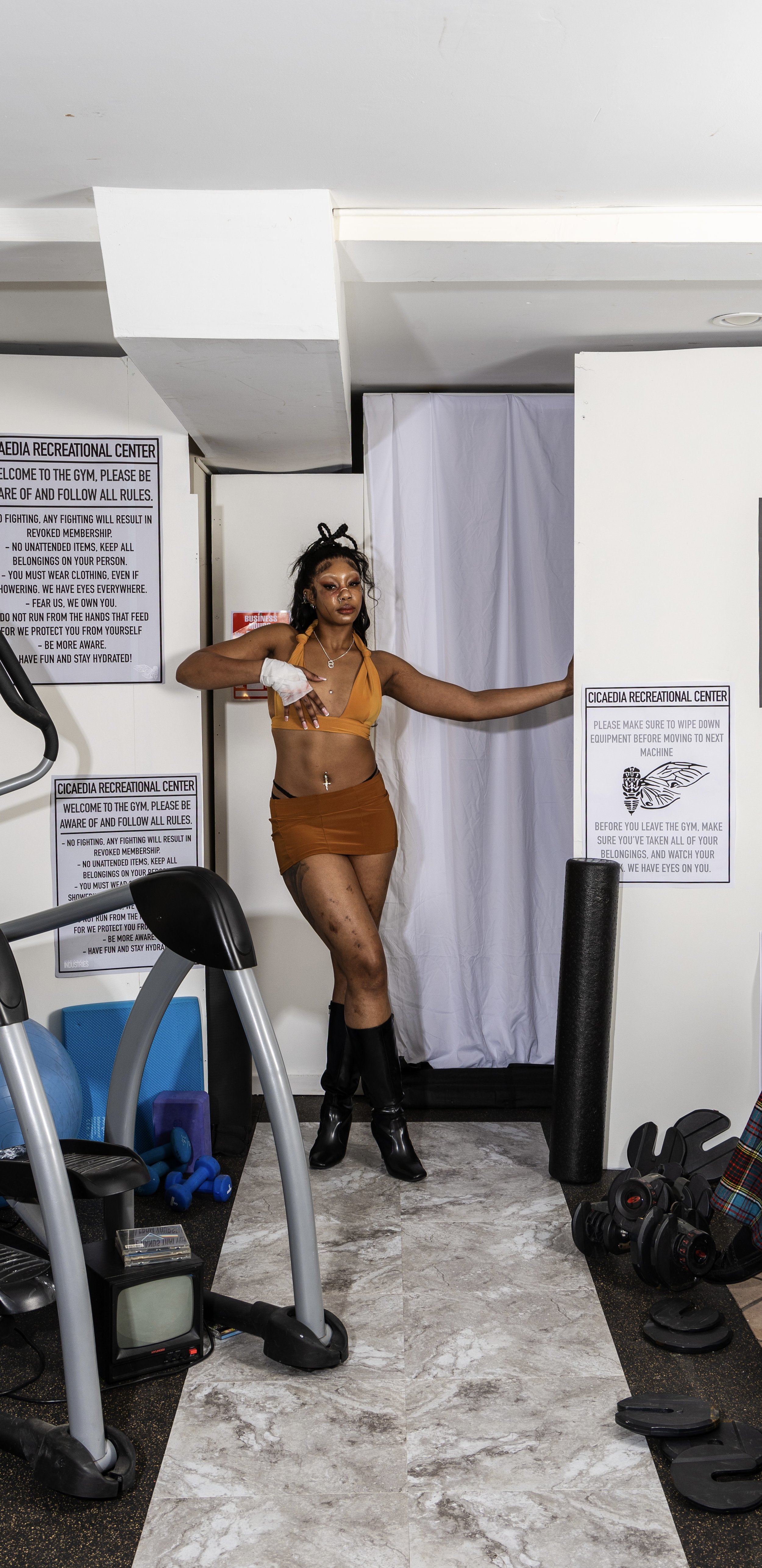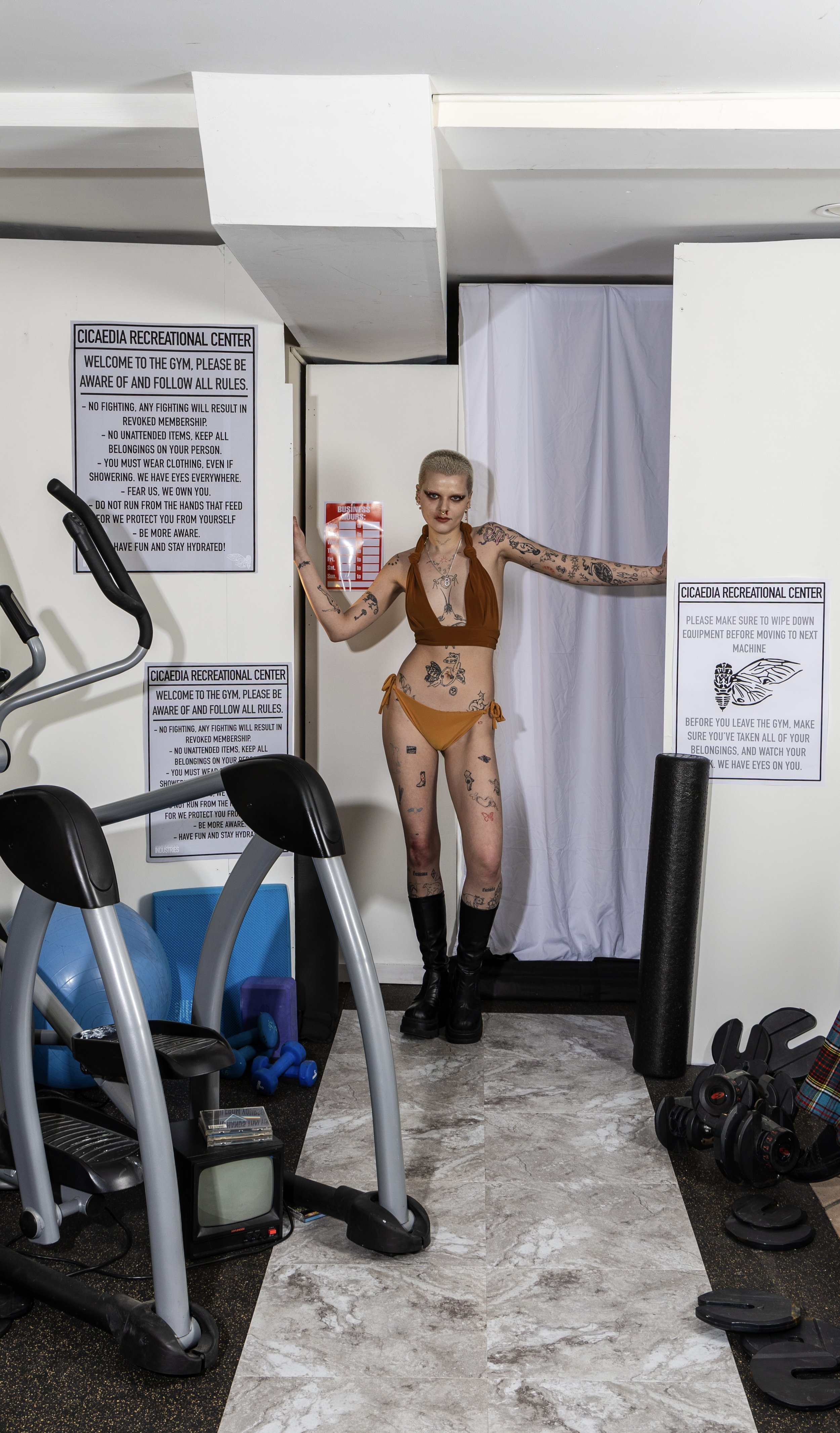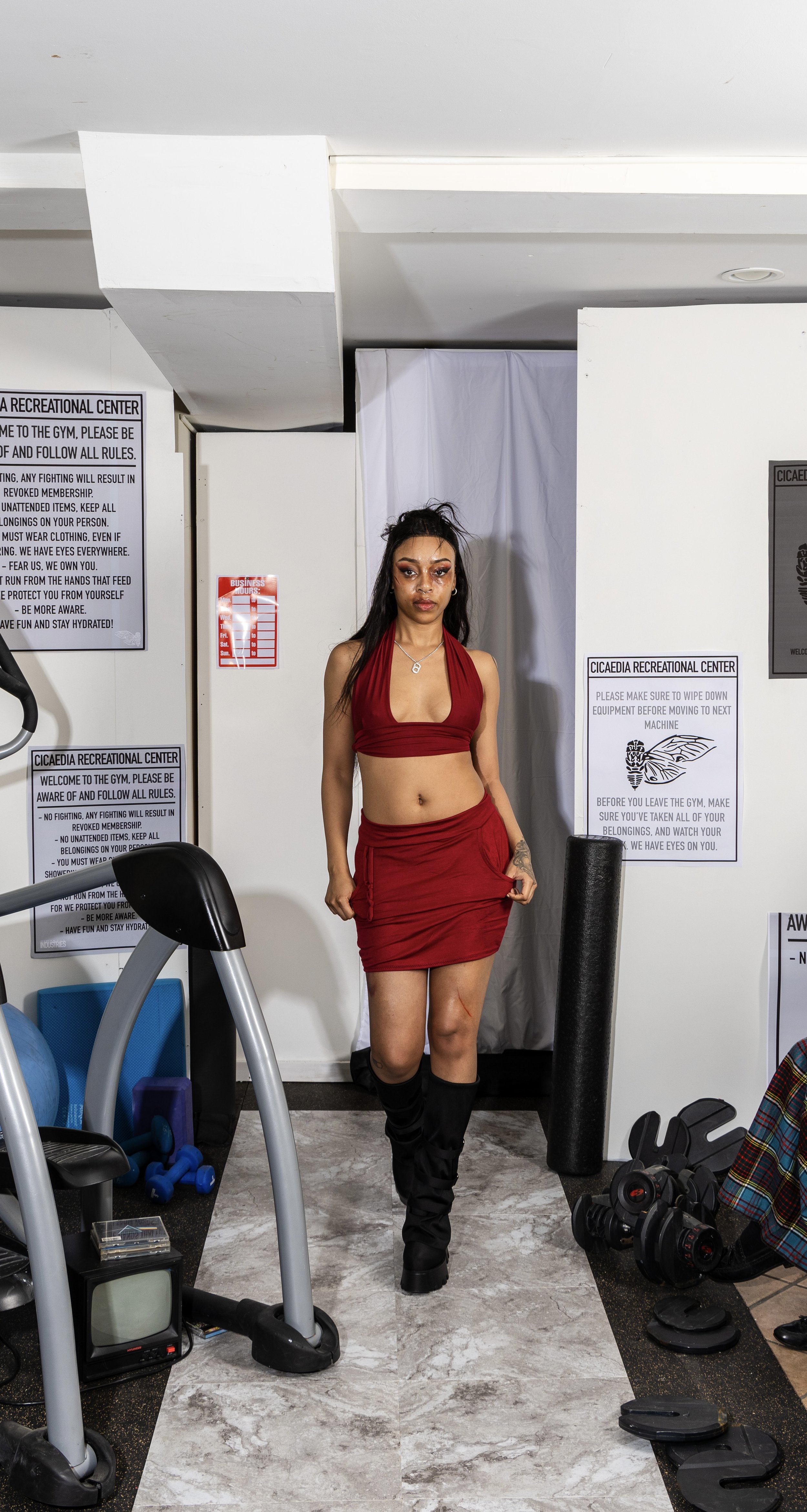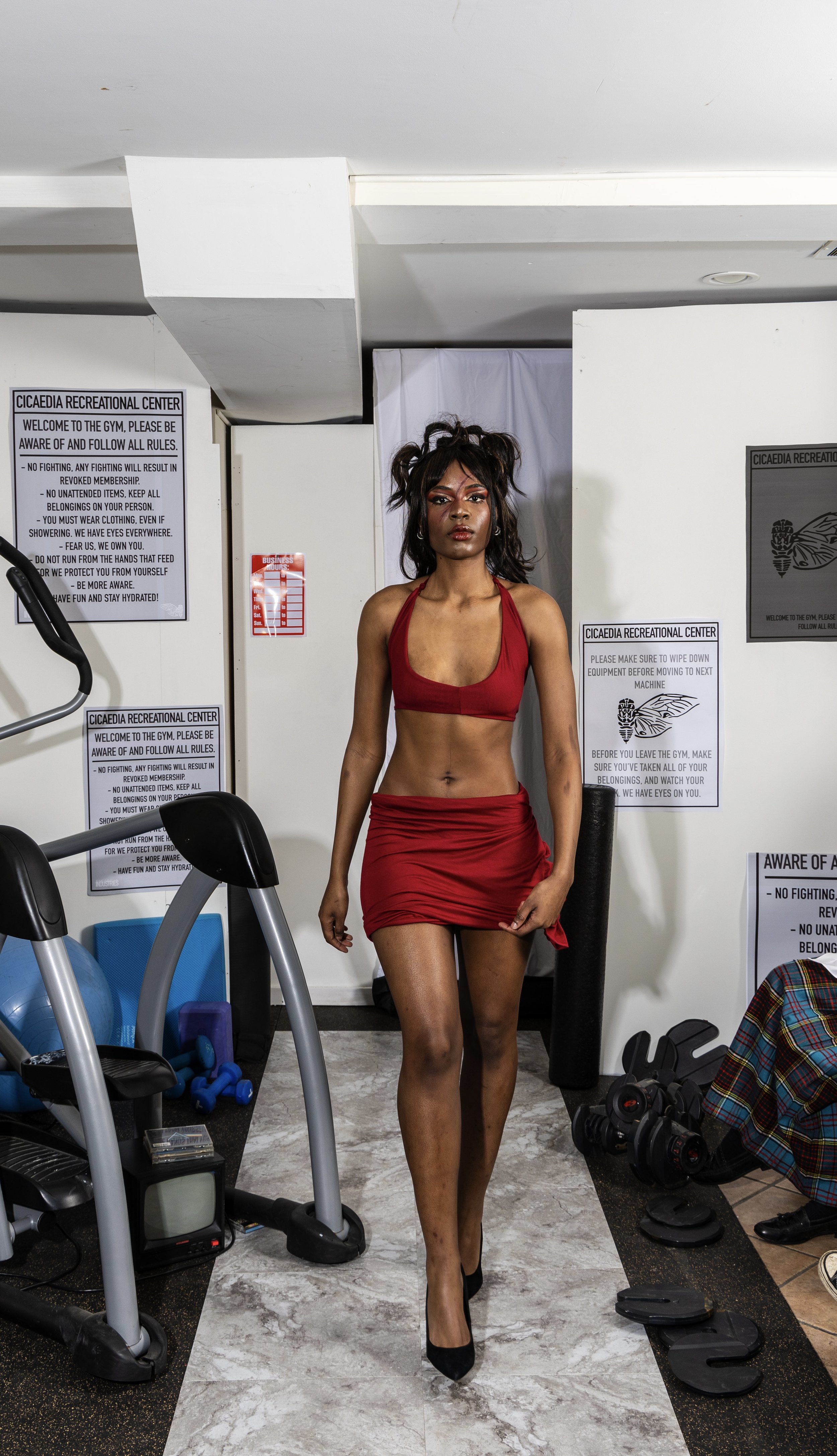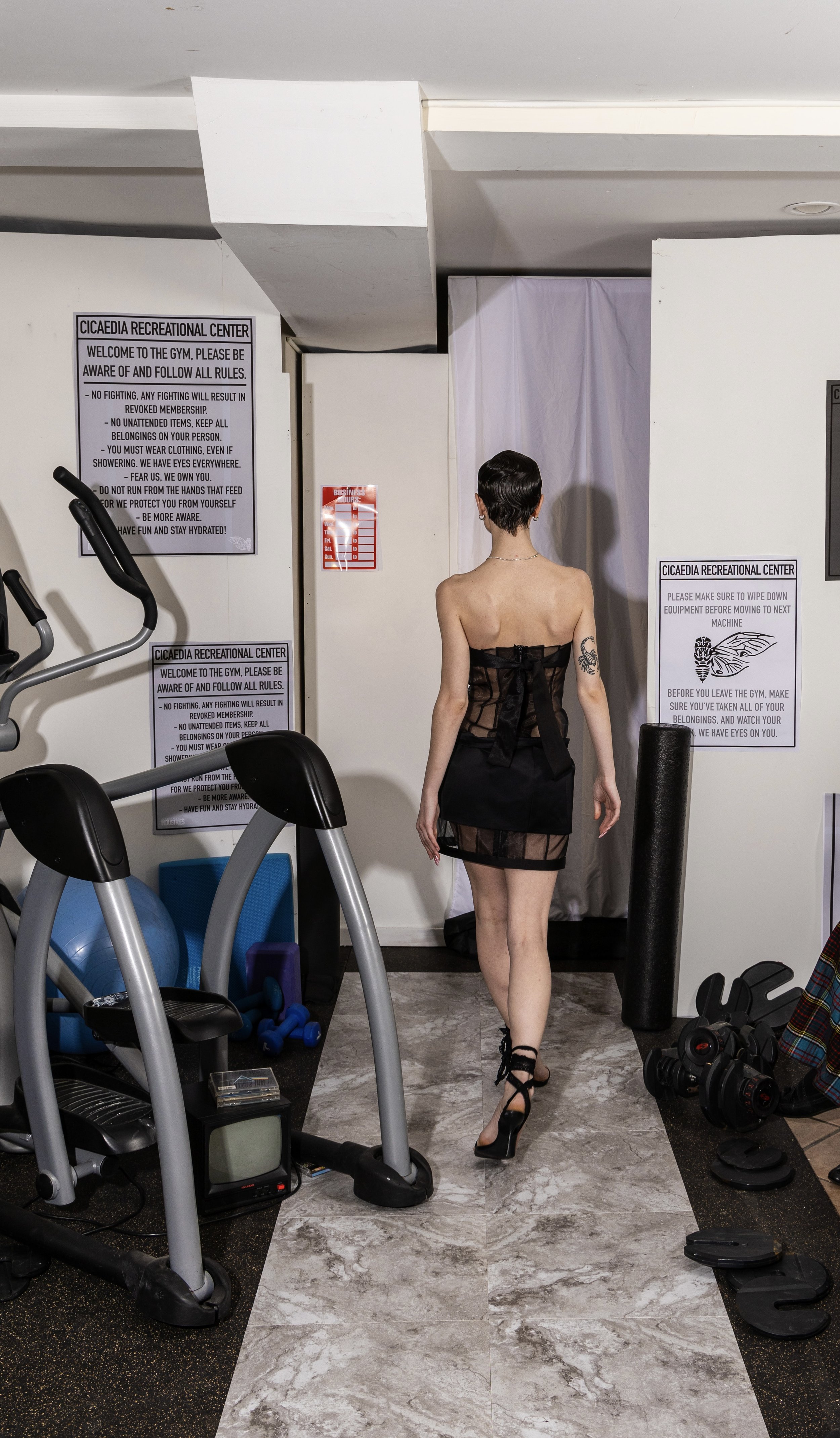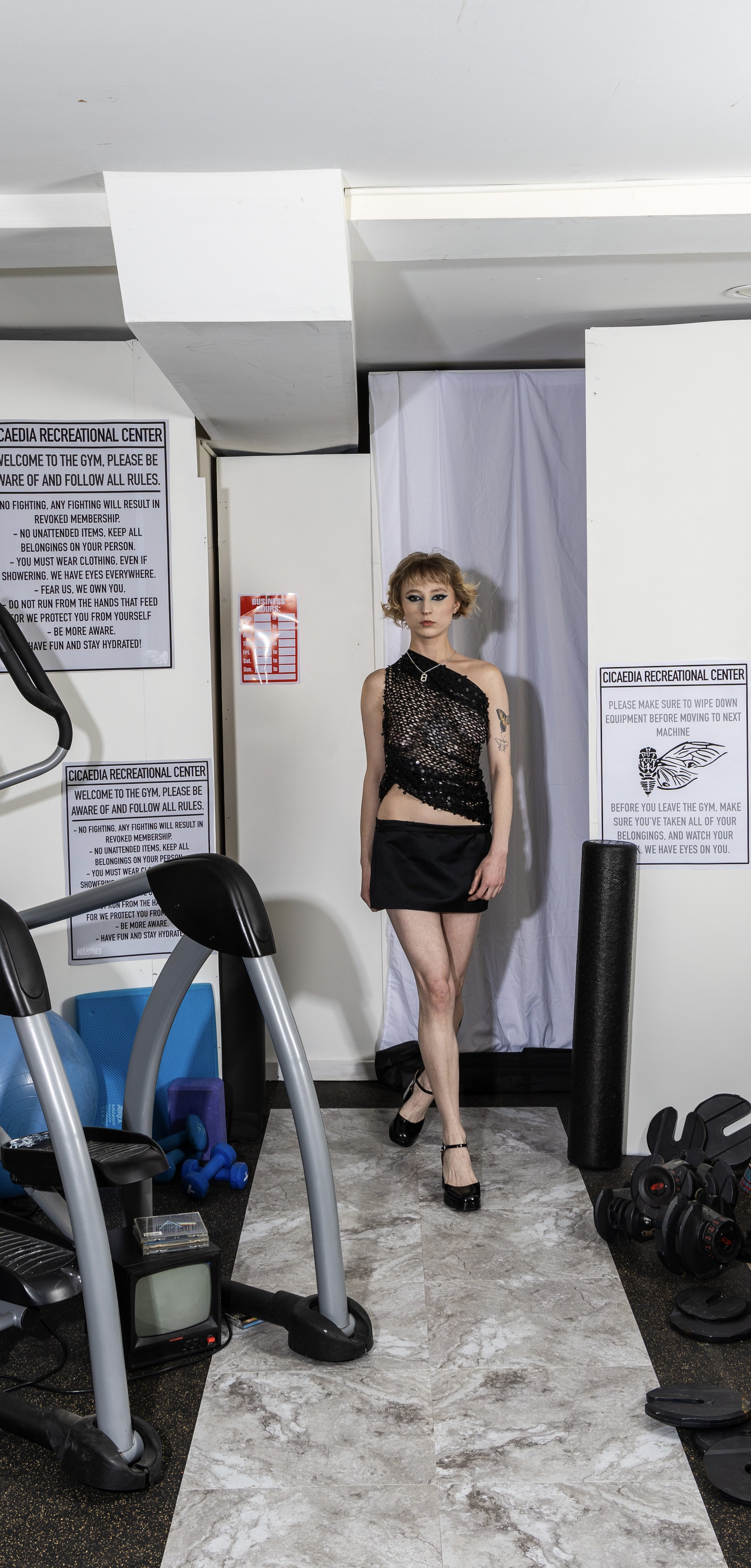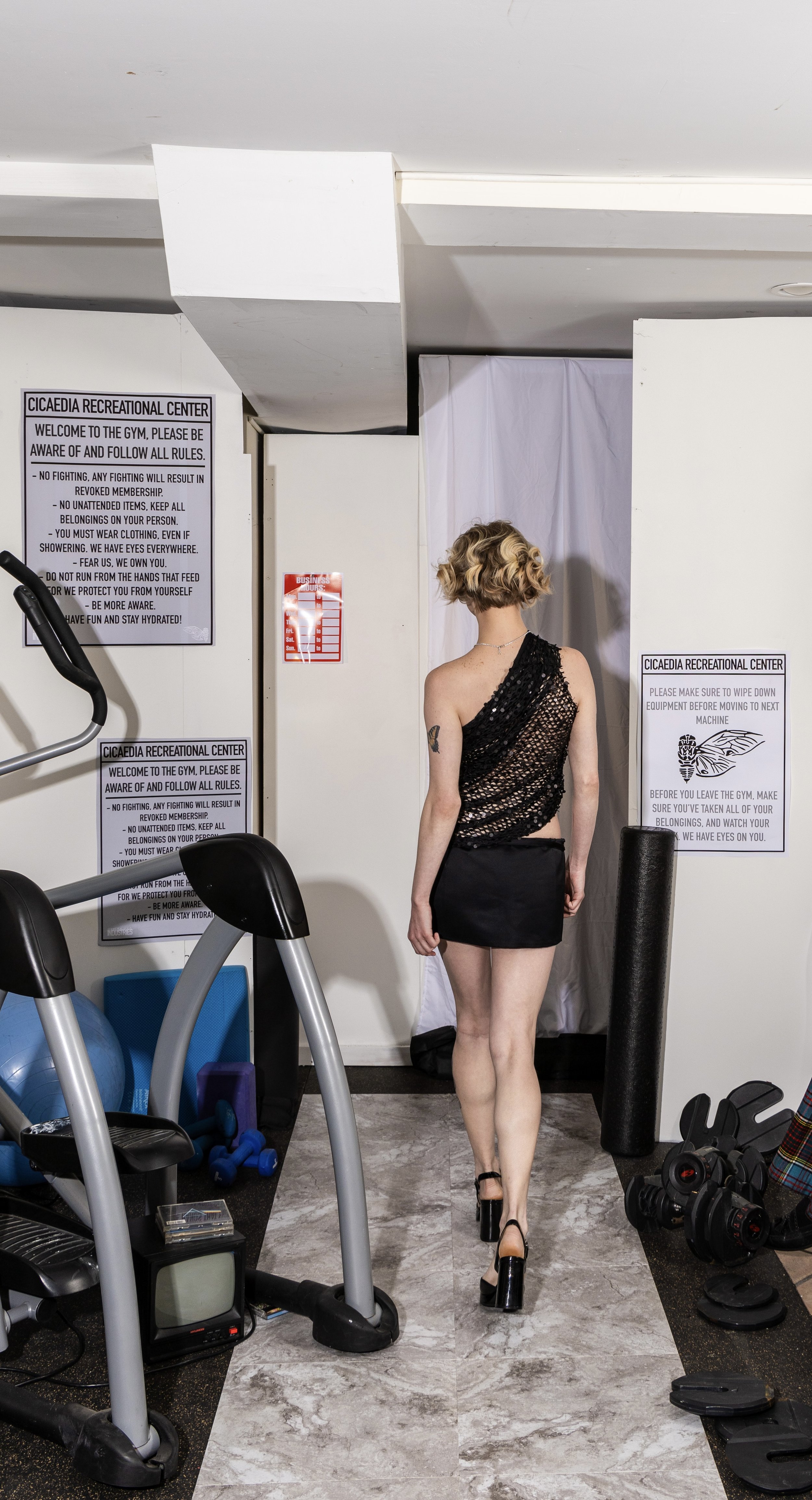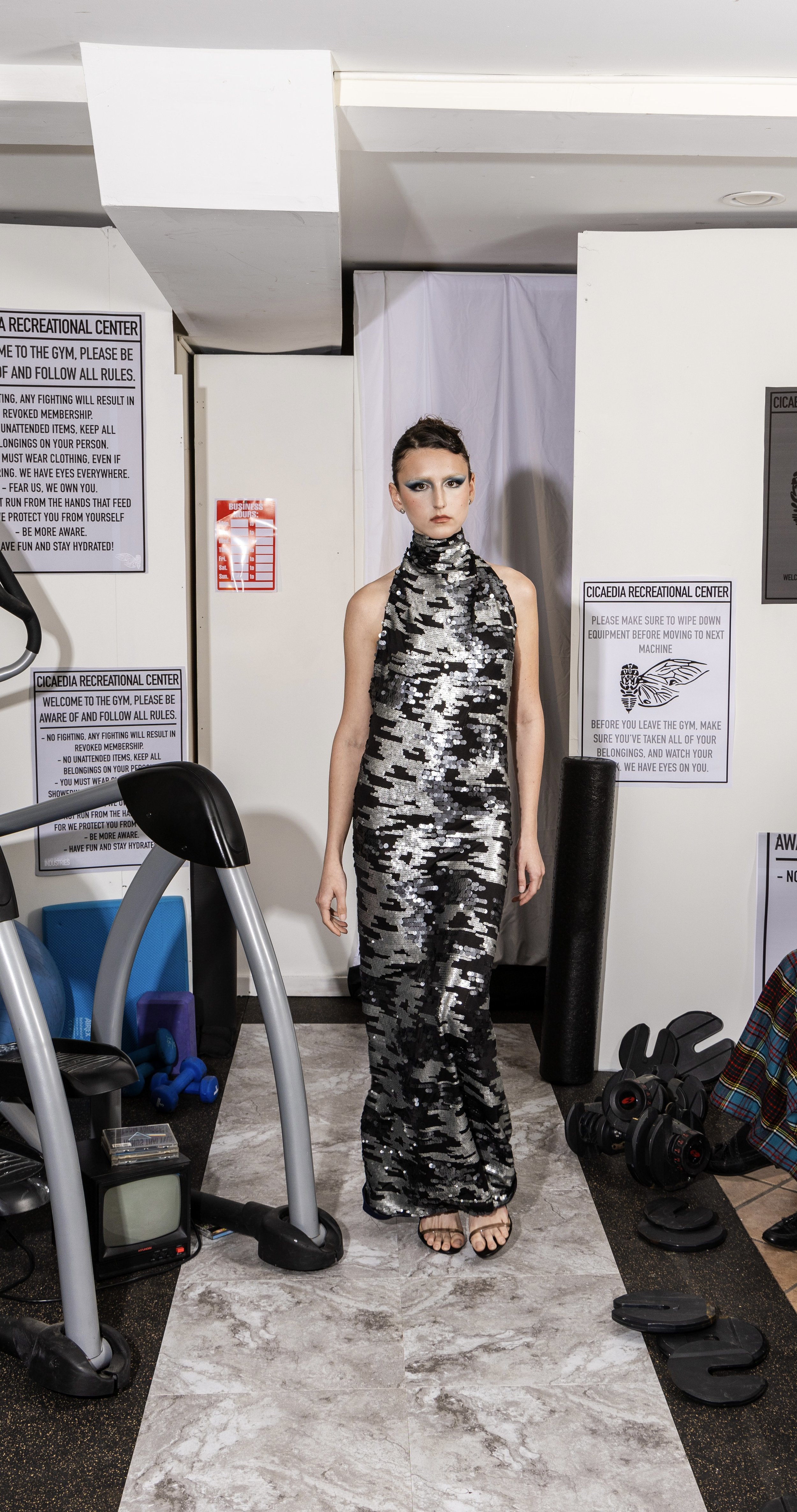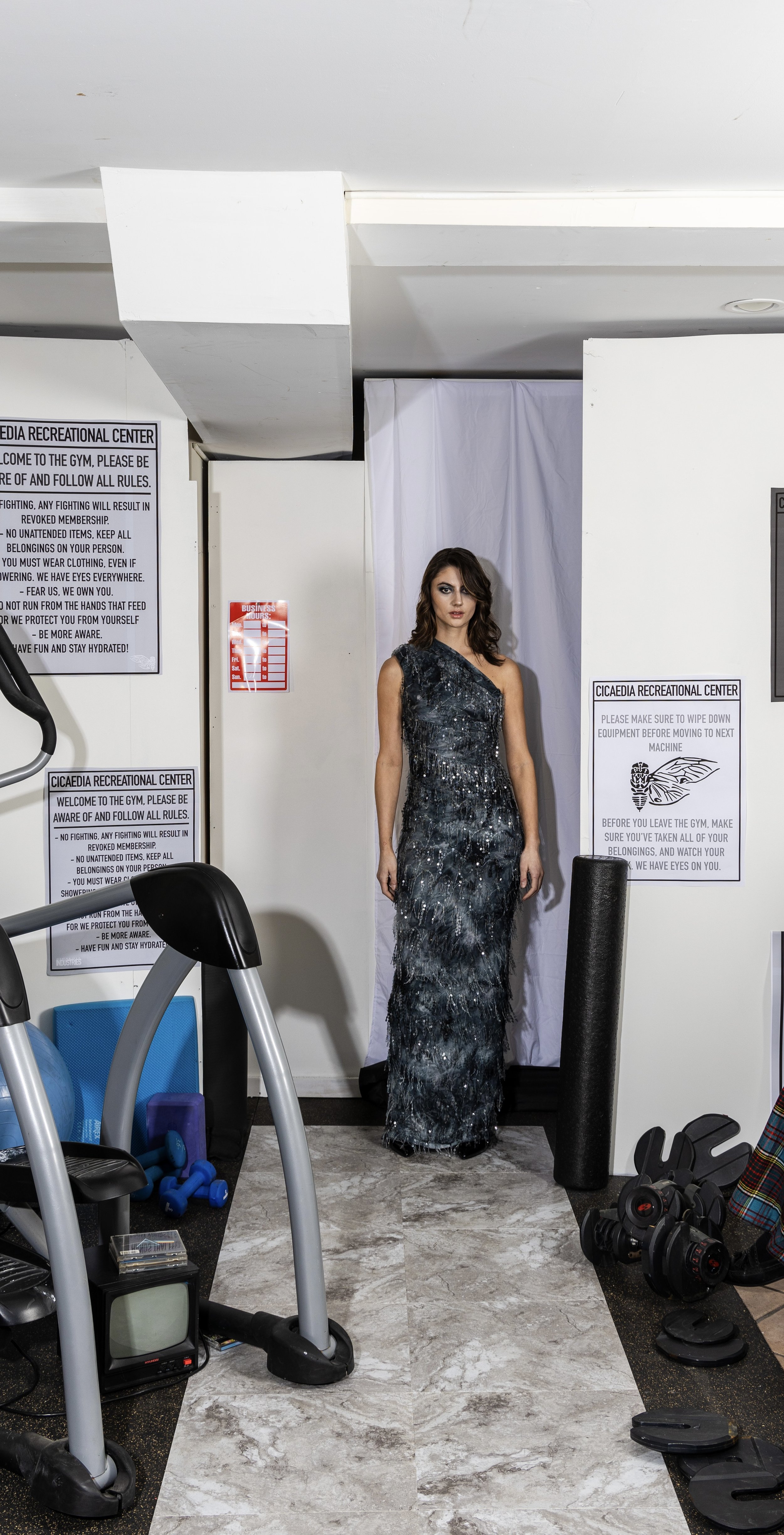CICAEDIA Fall / Winter 2024: Welcome to the Gym.
The collection came together fast. A week and a half. No plan. Just pressure. I was burnt out, surrounded by talk of sales, marketability, “wearable” outcomes. Everything felt clean and somehow gross and uninteresting. I didn’t want to design for a buyer yet. I wanted to make something without permission.
The starting point was Fight Club. Not the violence yet, the erosion of character more-so. The way one’s identity collapses under repetition when you’re told to perform stability inside systems that make no space for the mind. I didn’t plan a concept. That was the concept. I started sewing. And the structure appeared on its own. Three sections, states of mind, if you would.
The first was corporate. All black. Silver and black-lined eyes. Early-2000s curls slicked unbrushed; perfect. Everything tight, cold, deliberate. It looked like control but it wasn’t. It was just the performance of it.
Then came the break. The “fight” club.
Color rushed in, brown, gold, red. Drapes twisted and fell apart. Shoulders dropped. Fabrics clung or sagged. The clothes stopped behaving. Faces flushed with SFX. Eyes looked swollen. Lips cracked. Nothing was too violent but everything felt impacted. The garments didn’t protect the body. They exposed what was left of it.
The final section shifted to aftermath. Silver, black, and deep blue. Models moved slow like dying machinery. Their faces stripped of warmth, with reflective, metallic, chrome tones all over. The silhouettes became sculpture. Cold, exact, almost serene. One gown was slashed sequin mesh that looked like shredded steel. Another was sheer organdy ribboned under a satin skirt cut to slice. Everything shimmered like debris. The quiet of the smoke after impact.
Jewelry was also bizarre showmanship. Some pieces were royal, heavy crystals, with Versailles-level structure. Others were absurd, like rhinestone pull tabs, made with excess scrap metal. Luxury and waste fused into one goal; chaos of glamour.
The show itself was barely an event. I shoveled models to my house after working only about a week and a half on the collection at my apartment in the city. There was no show running, no production, no real plan. Just a small room, three peers, my family, and a soundtrack I mixed on the train. The pressure was lower than I had made it out to be, and yet I was still nervous.
The set was built inside my real-life gym, styled to look like a cartoonishly fake gym, an artificial version of something that already existed. It was stupidly ironic. I built the façade walls with my sister the night before, just to hide the entrance to my actual studio, which takes up the remaining half of the floor of my house. It came together in about two hours, that very night. Leftovers walls from Spring 2024 sprayed over were still wet during model rehearsals. The result was a fake gym inside a real gym. A performance of reality inside a real place. It wasn’t immersive. It was over-exposure.
The soundtrack was my first real attempt at audio engineering, and it became the main focus whenever I wasn’t sewing. I spent hours mixing it while sitting on the train on a 13 dollar DJ app, trying to build something that sounded as raw and instinctive as the collection itself. It opened with Tyler Durden’s monologue from Fight Club: “You are not your job. You’re not how much money you have in the bank. You’re not your fucking khakis. You are not the all-singing, all-dancing crap of the world.” From there, it slid into a mix of Madonna’s Justify My Love, a pre-2012 Madonna, the only version that matters, and eventually transitioned into Billy Idol’s Eyes Without a Face. That song carried everything I was feeling at the time: the confusion, the beauty, the exhaustion. It became the emotional anchor of the show, about seeing but not being seen, about performing truth without ever quite believing it.
The show was staged one or two days after New York Fashion Week had ended. Academically, the idea of doing anything at that point that wasn’t class-credit felt unbearable. But continuing the language and vision of my label, even if rushed, immature, and retrospectively a miss-step in the design language, was worth it. It was still progress. A material exploration that proved something vital: that CICAEDIA could live subversively within the system, even when exhausted by it.
There was no team. No studio. No timeline. I did it alone. I cut, draped, sewed, and built. Every decision was instinct. No filters. No direction. I wasn’t trying to sell anything. I literally didn’t have the time. I was just trying to make it out of academic headspace if even for a moment.
When it ended, the lights dropped. The last model disappeared, and Bittersweet Symphony started playing. I stood next to the warped set and watched the room fall still. Mainly because there weren’t many people there. That was the moment I had been building toward, the release after collapse. It was all over, at least for now.
That’s the ending. That’s the show.
Show-Notes Written by Yitzhak Rosenberg
Designed by Yitzhak Rosenberg
Runway Production, Set Design, Styling, & Casting by Yitzhak Rosenberg
Hair & Makeup by Joey DeVirgilio
Runway Photography by Enrique Marshall
Campaign shot by Joe Caster.
